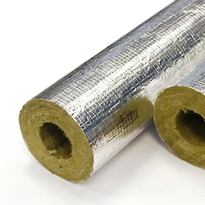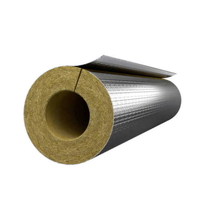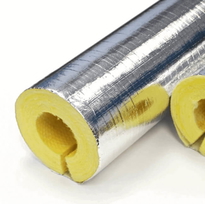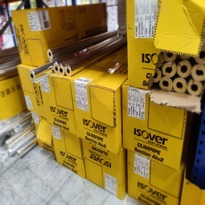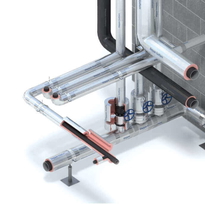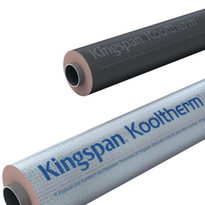Large Pipe Lagging
Large pipe lagging involves the installation of specialized insulation materials such as polyurethane, PIR, polystyrene, or phenolic foam around extensive pipelines to enhance energy efficiency, prevent heat loss, and ensure safety. Proper application requires thorough surface preparation, precise measurement, and the selection of appropriate insulation based on environmental conditions. Securing the joints adequately through sealing techniques is essential to maintain thermal integrity and prevent moisture ingress.
Adhering to industry standards such as ASTM and UFGS ensures that the installation is safe, durable, and performed to the highest standards. This involves following detailed guidelines on material handling, surface preparation, and installation practices to maximize performance and safety.
Further detailed techniques include ensuring the insulation materials are evenly applied, avoiding compression, which could impair effectiveness, and maintaining proper overlap at joints. Additionally, using correct sealing methods at joints and around fittings prevents thermal bridging and maintains the insulation’s integrity over time.
Choosing the right material depends on factors such as operating temperature, environmental exposure, and safety requirements. For example, phenolic foam offers excellent fire resistance, while PIR provides long-term stability and high moisture resistance.
Attention to these details in large pipe lagging projects will significantly boost operational efficiency and safety, ensuring pipelines are well-protected against heat loss and corrosion, ultimately reducing energy costs and maintenance requirements across the facility.
Types of Insulation Materials Used in Large Pipe Lagging
Various insulation materials are utilized in large pipe lagging to meet the diverse requirements of thermal efficiency, moisture resistance, fire safety, and structural integrity.
Polyethylene is lightweight and flexible, making it ideal for cooling applications. It offers excellent resistance to moisture, thereby preventing corrosion on pipes. Its ease of installation and durability make it a popular choice for a range of pipe insulation needs.
Polyisocyanurate (PIR) provides high-temperature resistance up to 150°C, demonstrating outstanding fire resistance and thermal performance. This makes it particularly suitable for demanding industrial environments where safety and efficiency are paramount. PIR’s high thermal efficiency allows for reduced insulation thickness, saving space and material costs.
Polystyrene offers exceptional insulating properties at an economical cost. It's mainly used in low-temperature systems such as chilled water piping. It delivers effective thermal insulation while keeping project costs manageable.
Polyurethane combines superior durability and thermal resistance, maintaining its shape and insulation properties across a broad temperature range. Its high moisture resistance ensures longevity, making it suitable for long-term applications in various settings.
Phenolic foam, known for its fire-resistant properties, is lightweight and often covered with foil for additional reflectivity. It's typically employed where strict fire safety standards are in place, providing effective insulation with enhanced safety features.
These materials are selected according to the specific requirements of each installation, ensuring optimal performance, safety, and compliance with UK standards.
Advantages of Effective Large Pipe Insulation
Effective large pipe insulation provides numerous tangible benefits that significantly enhance operational efficiency, safety, and cost management. By reducing heat loss, it diminishes energy consumption and boosts system reliability by preventing pipe freezing and bursts. For instance, insulating a 30-meter pipe can result in annual energy savings of approximately £300. Moreover, insulation extends the lifespan of equipment, lowers maintenance costs, and supports environmental sustainability through reduced emissions.
Advantage Area |
Key Benefit |
Result |
| Energy Efficiency | Minimising heat loss, decreasing energy consumption | Cost savings and reduced carbon footprint |
| Cost Savings | Long-term financial benefits | Return on investment in as little as six months |
| Safety | Reducing burn risks and preventing pipe freezing | Safer workplaces and reduced risk of accidents |
| Industry Trends | Increasing market demand and technological improvements | Greater adoption and enhanced system performance |
| Environmental Impact | Lower emissions and cleaner operation | Contribution towards UK sustainability goals |
Installation Techniques for Large Pipe Lagging
Proper installation of large pipe lagging requires careful preparation and methodical execution to ensure maximum thermal efficiency and durability. Prior to installation, surfaces must be thoroughly cleaned, dried, and free from rust, debris, or oils; in some cases, protective coatings may be necessary. Proper surface preparation ensures that the lagging adheres correctly and performs effectively over time. It's essential to take accurate measurements to verify that the pipe diameter and insulation thickness match the specified requirements. Insulation materials should be selected based on pipe size, operating temperature, and environmental conditions. Preformed sections of lagging should be cut precisely to provide a snug fit around the pipe. Handles and suitable tools should be prepared in advance to facilitate efficient installation. During the process, the insulation should be fully opened and wrapped from the joints towards the center, ensuring continuity and proper overlap. Seams must be sealed using appropriate adhesives or bonding agents to prevent heat loss and ingress of moisture. Additional mechanical fasteners may be utilized to secure the lagging firmly in place, especially on heavy or vertical pipes. It is important to consider thermal conductivity when selecting insulation to maximize energy efficiency and performance. A smooth, airtight finish is vital for optimal performance, so attention should be paid to aligning the lagging correctly and checking for gaps or loose areas before completing the installation. Following these steps will help to ensure that large pipe lagging performs effectively over its service life.
Practical Applications and Industry Standards
Practical applications of large pipe lagging in the UK predominantly center on enhancing energy efficiency, reducing noise levels, increasing durability, and ensuring compliance with industry standards. Proper insulation significantly minimizes heat loss, thereby maintaining consistent temperatures within industrial systems and reducing operating costs. It also acts as a noise dampener, controlling the sound generated by large pipes to improve workplace comfort. Standards help ensure that insulation materials meet safety and performance requirements. Proper selection of insulation materials can also prevent thermal bridging, which is crucial for maintaining overall system efficiency. Furthermore, lagging provides vital protection against environmental influences such as adverse weather conditions and mechanical impacts, helping to extend the lifespan of pipelines. Choosing the appropriate materials and adherence to standards are essential for safety and performance.
Industry standards relevant to pipe lagging include guidelines from organizations such as ASTM, NAIMA, and UFGS. These standards detail requirements concerning insulation thickness, U-values, and suitable material specifications. The selection of materials—such as fiberglass, rock wool, and aluminum jacketing—is based on environmental exposure, pipe size, and the desired technical performance. This careful selection ensures compliance with safety regulations and optimizes the efficiency of the entire system.
Standard |
Focus |
Material Specifications |
| ASTM | Testing and performance | Fiberglass, rock wool |
| NAIMA | Industry guidelines | Insulation thickness, U-values |
| UFGS | Insulation requirements | Pipe diameter, environmental conditions |
Conclusion
Effective large pipe lagging depends on selecting suitable insulation materials, following precise installation procedures, and aligning with industry standards to ensure optimal thermal performance and safety. Proper insulation reduces heat loss, prevents condensation, and enhances operational efficiency across a range of industrial and commercial settings. Careful application of these best practices results in durable, efficient pipe systems that comply with regulatory requirements and minimise long-term maintenance costs. This underscores the importance of meticulous planning and execution in large pipe lagging projects to achieve reliable and cost-effective outcomes.
